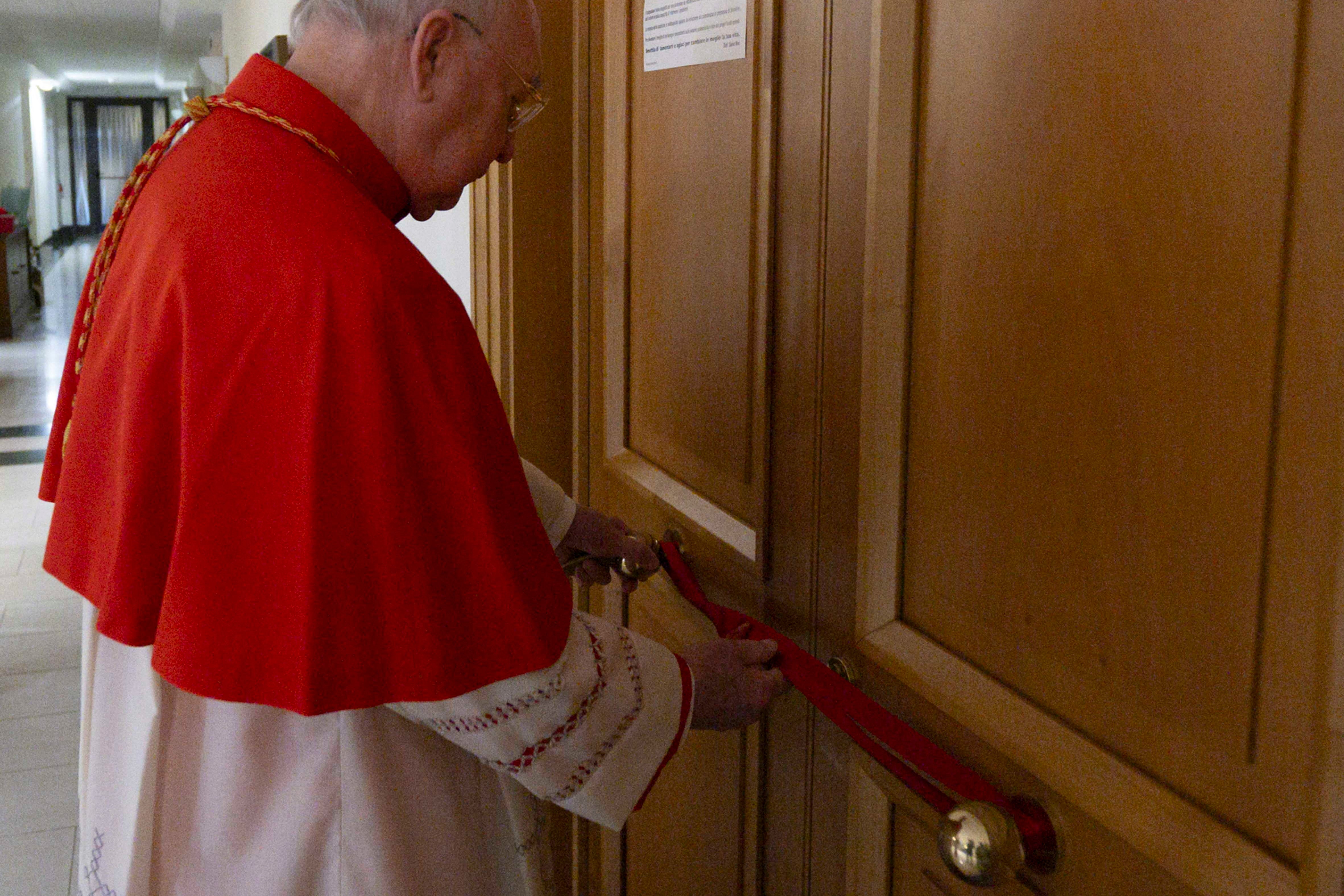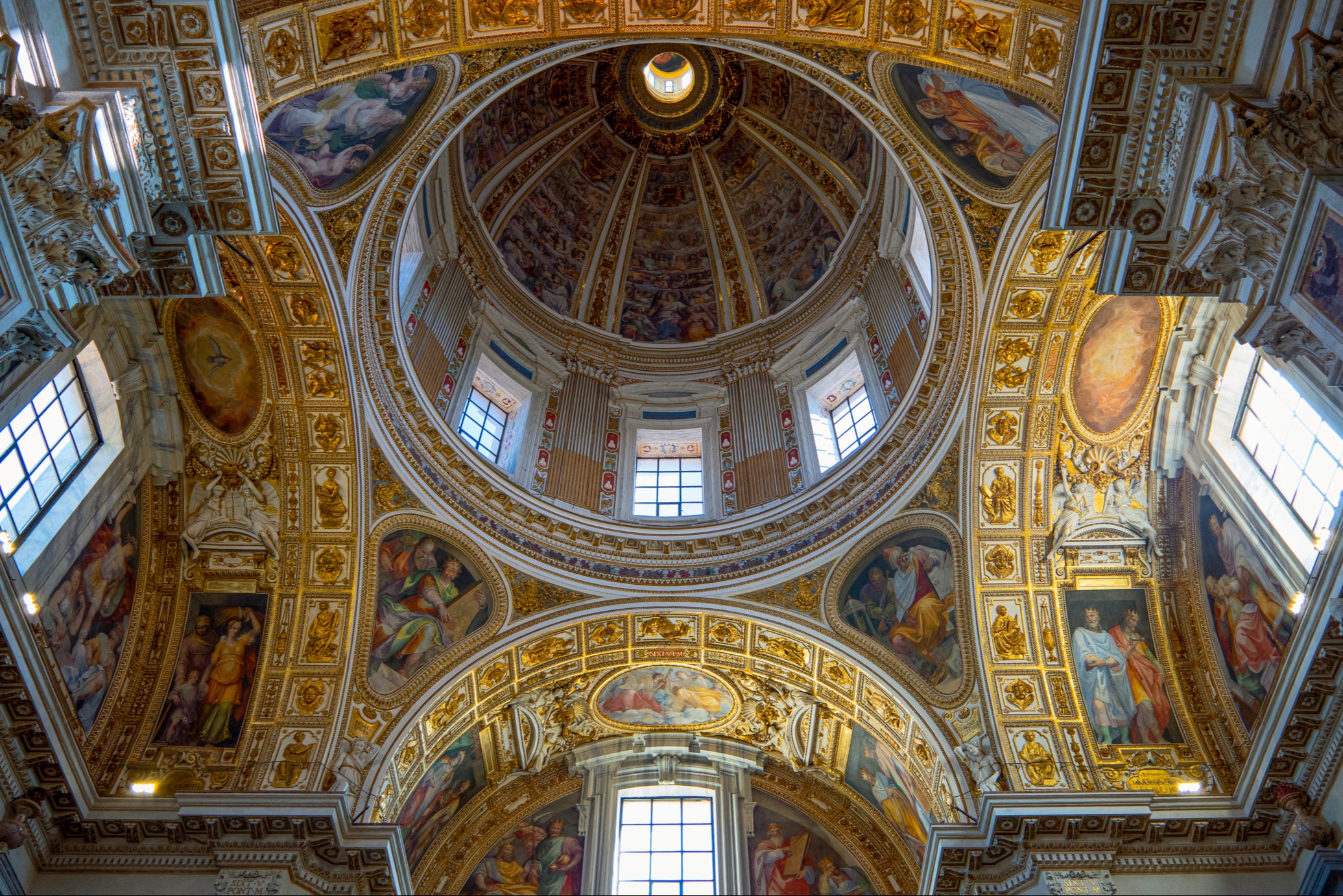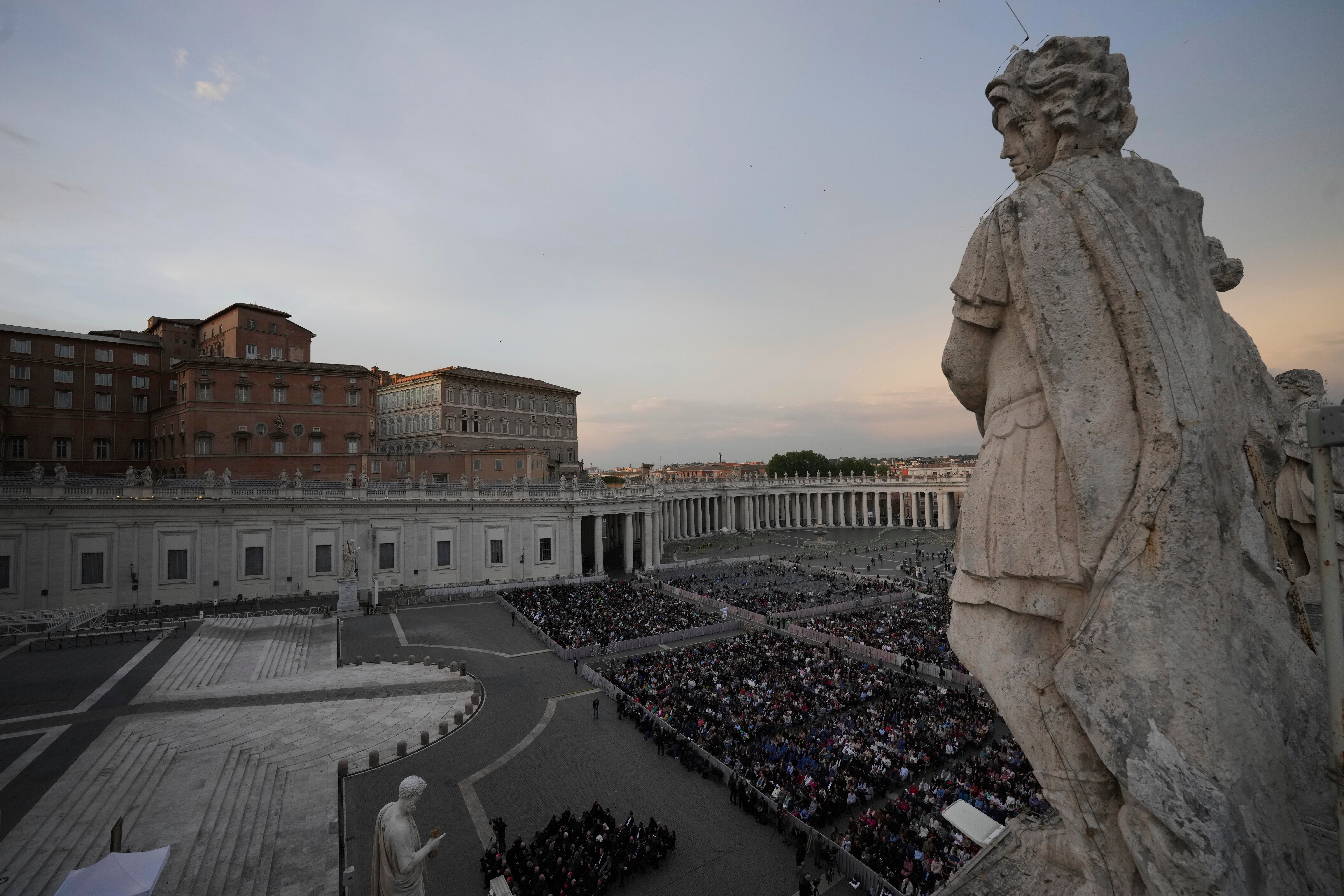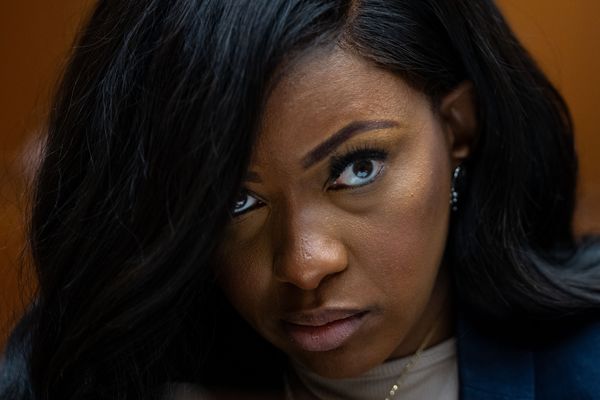Following the death of Pope Francis, the Catholic Church has chosen a date to elect its new leader, in a process virtually unchanged in 800 years.
The system is known as the ‘Papal Conclave,’ and is a democratic process with a strong emphasis on working through multiple rounds of voting until a clear consensus emerges.
Under the current rules, only cardinals under the age of 80 are allowed to cast a vote.
Officially candidates for pope need only be male and Catholic, although in reality Pontiffs have only ever been chosen from the ranks of cardinals for centuries.
There’s no age limit on who can become pope, but Francis was 76 when he took up the position, and held it until is death aged 88.
Benedict before him was 78, and was pope for only eight years before his surprise retirement aged 85.
When will the Conclave begin?
The pope’s funeral took place on Saturday, 26 April, starting nine official days of mourning called the novemdiales, which ends on May 5.
According to Vatican rules, the process of electing a new pope should begin between 15 and 20 days after the pontiff’s death. The Vatican confirmed the conclave will begin on May 7.
It is the camerlengo, a cardinal selected by the pope, who is tasked with organising the Conclave election process.

The current camerlengo is Cardinal Kevin Farrell, an Irish-born American Catholic prelate who has held the position since 2019.
Cardinal Farrell will have several other tasks before this, however, overseeing the papal burial process. He will have the responsibility of arranging for the use of a ceremonial hammer to destroy the ring Pope Francis used to seal documents, ensuring no chance of forgeries.
He is also the cardinal that seals the door to the pope’s study and bedroom with a traditional red ribbon.
How does Conclave work?
To begin the Conclave process, there is a special morning mass, after which the 135 cardinals of voting age would gather inside the exquisitely decorated Sistine Chapel – home of all the Papal Conclaves since 1858.
New rules for the election of a pope were introduced in 1996 under Pope John Paul II, and the process has largely remained unchanged since then. After the death of a pope, cardinals hold a series of meetings called general congregations to discuss the future of the Church.
While all 252 cardinals can participate in these meetings, only 135 are under the age of 80 and so are eligible to participate in the Conclave.
After the cardinals have gathered, the shout “extra omnes” (everybody out) rings out and the cardinals – who are sworn to an oath of secrecy – will be locked inside the Conclave until they can choose a successor.
There is no guarantee that the first round of voting will be revealed the same day. Through a mixture of speeches, prayer, reflection – and intense political jostling – cardinals whittle down candidates through successive rounds of voting.

The cardinals themselves sit on both sides of the Sistine Chapel.
The names of nine cardinals are chosen at random to officiate and organise the vote. Three become Scrutineers, whose job it is to oversee the vote. Three more collect the votes and three more revise them.
A pope is only elected when a single candidate receives a two-thirds majority. Sometimes pope’s are chosen quickly when a strong candidate emerges. However from the 34th ballot onwards, the Conclave only votes between the two front runners who gained the most votes in the previous round.
Incidentally the longest Papal Conclave, in the late thirteenth century, lasted the best part of three years thanks to massive political infighting. Three voting cardinals died during the process.
The ballot itself is secret and was introduced on 1621 by Gregory XV to try and avoid overt politicking but the Conclave is inevitably a hotbed of competing factions who wish to see their man come out on top.
During each ballot cardinals write the name of their choice, ideally in distorted handwriting to disguise their identity.
The ballot papers are then burned in a small fire inside the Sistine Chapel. The black smoke which is produced by the fire tells the crowds waiting outside that a new pope has yet to be chosen.

When one candidate has finally won two-thirds of the vote a new pope is elected. The Cardinal Dean then calls the candidate to the front of the chapel and asks whether they are willing to accept. If the answer is yes, the new Pope is then asked to choose his new Papal name.
Although the pope is seen as the successor of St Peter, none have chosen Peter for their Papal name, partly to avoid comparisons to the founder of the Roman Catholic Church and partly because of an ancient prophecy that a new pope called Peter will precede the end of the world.
With a pope now duly elected the ballot papers are burned once more with an additive placed in the fire that turns the smoke white, informing the world that a new Pontiff has been chosen.
In the weeks leading up to the Conclave, Vatican tailors get to work on creating three Papal robes in small, medium and large. The new pope is led into the Room of Tears adjacent to the Sistine Chapel where he dons his new white robes and red slippers.
The pope is then presented to the crowds who have gathered in the Vatican from the main balcony of St Peter’s Basilica with the famous words: “Annuntio vobis gaudium magnum: Habemus Papam!” (I announce to you with great joy we have a pope.)
Pope Francis’ tomb seen for first time in images released by Vatican
Who could be the new Pope? The cardinals who might become the next head of the Catholic Church
What happens after Pope Francis funeral - how the Conclave to select his successor will work
One of Europe’s strongest floating cranes to recover Mike Lynch’s sunken yacht
Journalists swarm cardinals at the Vatican gates as they meet to plan a conclave
Trump claims Zelensky ready to give up Crimea after meeting at Pope Francis’ funeral




!["[T]he First and Fifth Amendments Require ICE to Provide Information About the Whereabouts of a Detained Person"](https://images.inkl.com/s3/publisher/cover/212/reason-cover.png?w=600)


